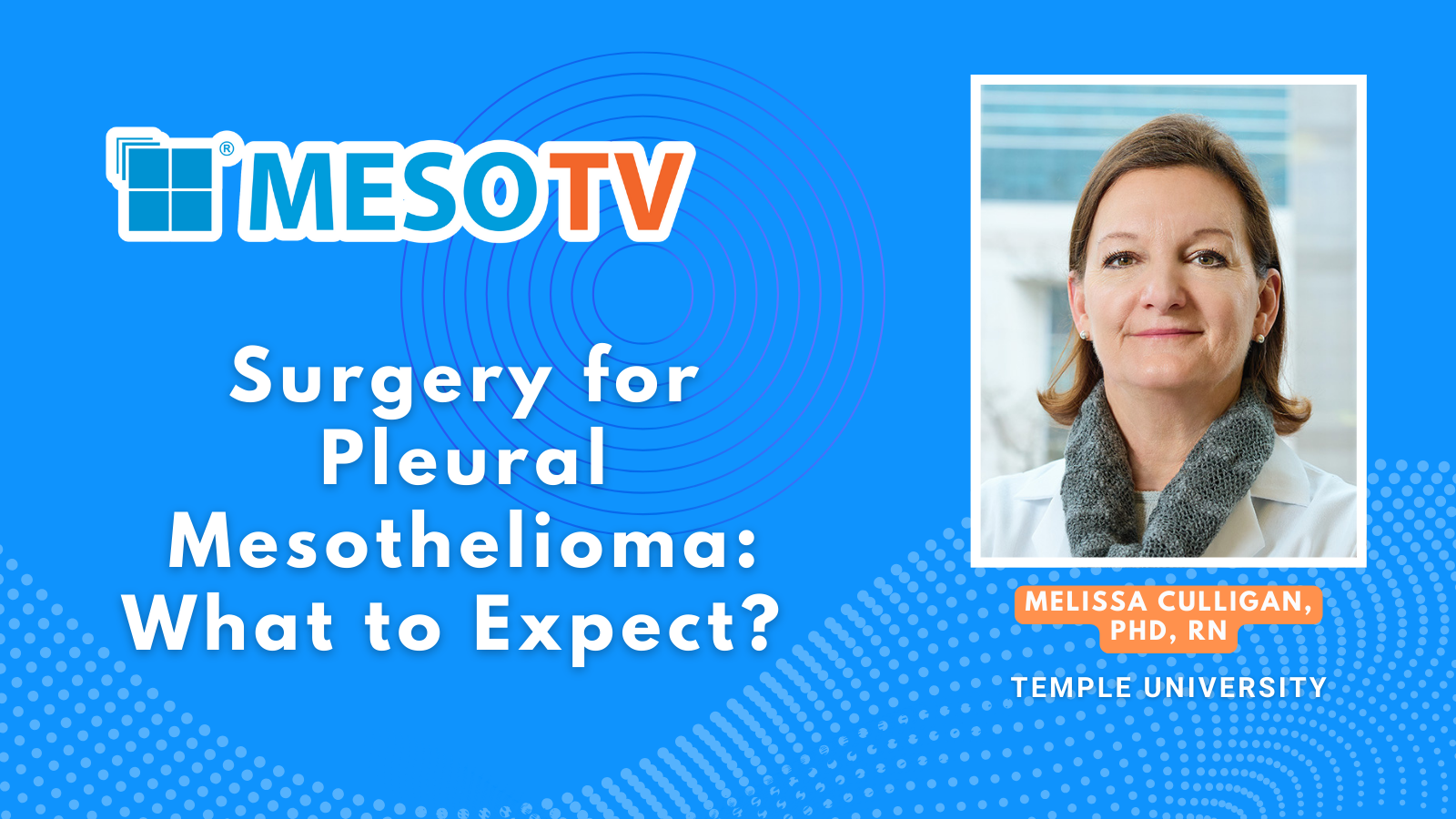The World Conference on Lung Cancer is a prestigious annual event organized by the International Association for the Study of Lung Cancer (IASLC). The conference, as the name suggests, focuses mainly on lung cancer, however, it also provides a space for mesothelioma researchers and physicians to present new data from their mesothelioma studies. As often is the case, many mesothelioma experts are also experts in other thoracic malignancies, including lung cancer.
To keep you informed, we have highlighted a few of the studies presented at this year’s conference. To obtain details about each or to learn if a treatment is available to you, please contact us at [email protected].
……………………………………………………………………………………………………………………………………………
A Phase II Study of Nivolumab: A Multicenter, Open-Label, Single Arm Study in Malignant Pleural Mesothelioma (MERIT)
Nivolumab (anti-PD-1, ONO-4538, BMS-936558), a humanized monoclonal antibody, PD-1 immune-checkpoint inhibitor, has demonstrated antitumor activity and a manageable safety profile in several advanced malignancies. The following is a report of the preliminary results of a phase II study to evaluate the efficacy and safety of Nivolumab in previously treated Japanese malignant pleural mesothelioma patients.
At 6 months, the study’s objective response rate (ORR) was 29.4% observed across tissue types, epithelioid 7/27 (25.9%), sarcomatoid 2/3 (66.7%), biphasic 1/4 (25.0%). 13 pts (38.2%) had stable disease, resulting in a 6-month disease control rate (DCR) of 67.6%. 23 (67.6%) patients experienced drug-related adverse event (DRAE), and 7 (20.6%) experienced grade 3/4 DRAEs. 2 patients required dose discontinuation because of pneumonitis (Grade2 and 3).
Conclusion:
Single-agent Nivolumab has significant activity as 2nd/3rd line treatment for malignant pleural mesothelioma patients, and the study met the primary endpoint, suggesting that Nivolumab has a potential to be a new therapeutic option for mesothelioma.
Ipilimumab and Nivolumab in the Treatment of Recurrent Malignant Pleural Mesothelioma: A Phase II Study
A recent study of nivolumab alone showed a disease control rate (DCR) of 50% at 12 weeks. This promoted a new study testing the combination of nivolumab and ipilimumab.
At 12 weeks the study reported a DCR of 72% (18 of 25 patients in the study). Observed toxicity was mild.
Conclusion:
In this interim analysis nivolumab plus ipilimumab meets the primary endpoint for patients with recurrent malignant mesothelioma. Toxicity is mild.
Tremelimumab plus Durvalumab in First- or Second-Line Mesothelioma Patients: Final Analysis of the NIBIT-MESO-1 Study
The anti-CTLA-4 tremelimumab as monotherapy showed initial signs of activity in second-line malignant mesothelioma patients, though it failed to improve the overall survival (OS) of second or third line mesothelioma patients compared to placebo in the DETERMINE study. These results and the efficacy of targeting the PD-1/PD-L1 axis in a variety of tumor types, prompted the NIBIT-MESO-1 study aimed at investigating the activity and safety of tremelimumab combined with the anti-PD-L1 durvalumab in mesothelioma patients.
From October 2015 to October 2016, 40 mesothelioma patients were enrolled in the study. As of April 2017, 12 first or 28 second-line MM patients received a median of 6 doses of therapy (range = 1-13). Ten immune-related objective responses were observed (25%), and 25 patients reached an immune-related disease control rate (62.5%). Adverse events were generally manageable and reversible per protocol guidelines.
Conclusion:
These data suggest that the combination of tremelimumab and durvalumab is active, with a good safety profile in mesothelioma patients, and warrant further exploration.
Randomized Phase II Study of Anetumab Ravtansine or Vinorelbine in Patients with Malignant Pleural Mesothelioma
Anetumab ravtansine is a novel fully human anti-mesothelin IgG1 antibody conjugated to the maytansinoid tubulin inhibitor DM4. The following are the results of a randomized phase II trial of anetumab ravtansine compared to vinorelbine in patients with advanced malignant pleural mesothelioma who have high mesothelin expression and have progressed on platinum/pemetrexed-based first-line chemotherapy.
A total of 166 patients were randomized to anetumab ravtansine and 82 to vinorelbine. Median progression free survival (PFS) was 4.3 months for anetumab ravtansine vs 4.5 months for vinorelbine. Fourteen (8.4%) patients in the anetumab ravtansine arm had an objective response vs 5 (6.1%) in the vinorelbine arm, with no complete responses. Interim median overall survival was 10.1 months vs. 11.6 months respectively.
Conclusion:
In relapsed MPM, anetumab ravtansine was not superior to vinorelbine with respect to PFS.
Nintedanib + Pemetrexed/Cisplatin in Malignant Pleural Mesothelioma (MPM): Phase II Biomarker Data from the LUME Meso Study
Nintedanib is a triple angiokinase inhibitor. LUME-Meso is a randomised, Phase II/III study of ≤6 cycles of nintedanib+pemetrexed/cisplatin versus placebo+pemetrexed/cisplatin, followed by nintedanib or placebo maintenance, in chemo-naïve patients with malignant pleural mesothelioma. In Phase II results, nintedanib+pemetrexed/cisplatin improved progression-free survival (PFS) over the placebo+pemetrexed/cisplatin arm, with a trend for prolonged overall survival. Benefit was most pronounced in patients with epithelioid tumours. Since no pharmacodynamic/predictive biomarkers are validated for anti-angiogenic therapies, exploratory analyses were conducted to investigate potential associations of plasma-derived angiogenic factors and genomic markers with treatment outcome in the LUME-Meso Phase II epithelioid population.
Conclusion:
These analyses represent the first biomarker results for nintedanib-treated mesothelioma patients. While there seemed to be signals for greater progression free survival and overall survival improvement in patients with low plasma endoglin and major homozygous VEGFR1/3 genotypes, no biomarkers showed clear significant association with treatment benefit. These findings warrant further evaluation in the Phase III study.




